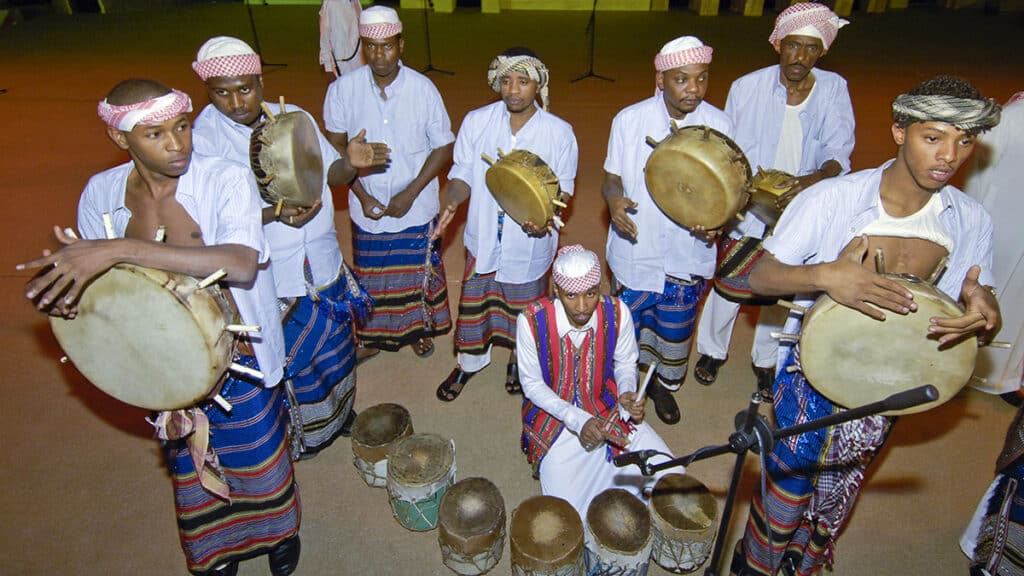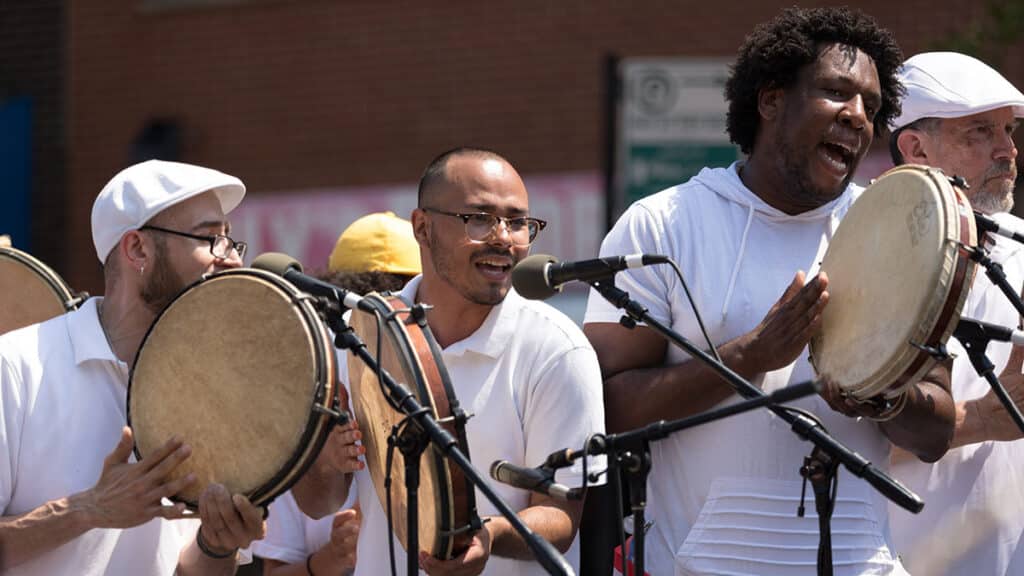Arab American Heritage Month is April, a national celebration of Arab culture and Arab American contributions to the culture and prosperity of the United States.
One of our favorite contributions is Apple Computer. Steve Jobs’ biological father was a Syrian Arab American. So Apple Computer, the Windows and Android operating systems, iPhones, iPads, and Apple watches have Arab American roots. That’s a great contribution.
The important point among all of this is not how different we are, but how similar we are, and how today we are all mixed together as Americans.
Arab Latins

You might not expect it, but the Latin world has deep roots in Arab people and culture too. Some of the roots are ancient, some from Africa, some are from the Colonial Era, and some are modern.
The Caribbean is very multicultural. We are currently traveling in the Dominican Republic and have marveled at how many Dominicans have Lebanese last names. You don’t expect it, but the Arab heritage is there.
Ancient Roots
Since prehistory, the pattern of Eurasian migration was east to west, so new arrivals brought Eastern technology and traditions with them.
During the Middle Ages, a lot of European culture was copied from the East because after the fall of the Western Roman Empire (476), Europe was poor and backward, and the Arabs, Turks, and Persians were rich and more advanced.
American education teaches Roman and Renaissance civilization, but there was one more great European Civilization. It was Islamic Spain which had several phases from 711-1492. The early phase was North African. The later phase was Arab.
It was a time of great cultural and scientific advancement in Spain. Jewish poets who wrote in Arabic, but also Hebrew, Greek and Latin, recovered lost classical knowledge from the great libraries of Islam. This was the intellectual foundation for what we now call “The West.” Islamic mathematicians and scientists made great advances that we benefit from today. Islamic Spain was one of the most technically advanced civilizations of its time.
The Arab mix is one of the things that makes Spanish culture so rich and beautiful.
Venice, Italy was the European gateway to Asia, so Asian and Arab traditions came to Europe through Venice. Look at Venetian architecture. It’s unique. It’s more oriental.
Ancient Arabs were great mathematicians. Roman numerals are hard to work with. The modern number system called “Arabic Numerals” is actually a Hindu number system brought to Arabia and Europe by Arab traders running the Monsoon Trade. They were only used in Northern Italy until the invention of the printing press, spread them around Europe and the world.
Venice, Italy was the European gateway to Asia, so Asian and Arab traditions came to Europe through Venice, the western end of the Silk Road through Arabia, Persia, India, and China. Look at Venetian architecture. It’s unique. It’s more oriental. Another Arab tradition adopted by Venetians was double-entry accounting, the foundation of modern accounting. It’s not clear who invented it, but Arabs brought double-entry accounting to Europe.
Arab Africa
The Phoenicians of what is now coastal Lebanon and Northern Israel were great mariners. They established colonies, such as Carthage, around the Mediterranean and even traded with ancient Britain. It’s generally accepted that they reached Senegal in West Africa, and there are historic clues that Phoenicians traveled as far as Gabon in Central Africa.
Arab lands are between Europe and Asia, and Romans loved silk and spices, so Arabs became great traders. They ran the Monsoon Trade between East Africa and India, developed the spice trade all the way to East Asia and the Pacific, ran the salt and gold trade across the Sahara Desert, and developed a coastal trade around the African coasts.
The Arabs were successful merchants, so some locals adopted their religion. That’s how Islam and Arab culture spread around Africa.
Colonial Roots
European colonizers came to the Americas to steal everything they could. The first thing they did was enslave the Indigenous Peoples and work them to death. To find more workers, first the Portuguese and then other Europeans kidnapped and trafficked Africans. That’s how Indigenous African religions, and Islam arrived in the Americas.
Dutty Boukman, one of the early leaders of the Haitian Revolution (1791-1804) was called “Boukman” because he was a man of the book, the Koran, a Muslim priest. We have met Caribbeans who don’t seem Arab in any way, but were taught to pray in Arabic at home. That means Arab traditions survived over 500 years of repression in secret, among families at home.
Puerto Rican plena is one of the island’s most treasured musical traditions. The pandereta hand drum used in plena is originally an Arab drum. Look at these two pictures. One is a Saudi folk music group. The other is Puerto Ricans playing plena.


Look how similar we are. The drum, the way we hold it, and the way we play it are the same. The plena museum at La Goyco community center in Santurce, San Juan, Puerto Rico has old panderetas made exactly like those Saudi drums. We thought they were strange until we saw this picture.
Many salsa songs start with the “diana,” a call that goes something like “Ala-la, la-la-la.” By tradition, we ask for divine connection before we dance, which is a traditional form of prayer. “Ala-la, la-la-la” descends from the Muslim call to prayer.
The blues, the root of most American popular music and dances, is originally from Arab North Africa. The blue note, the diminished seventh, provides that oriental sound. Warbling, the gospel and blues tradition of singing multiple phrases on one note, is North African. It derives from the call to prayer and perhaps ululation, the trilling cry done by Arab women to express strong feelings of sorrow, joy, celebration, or reverence. So when someone sings the “Start Spangled Banner” at a sports event, they probably sing it in ways that derive from Arab traditions.
Modern Migrations
Modern Arab migrations to the Americas were largely triggered by the long decline of the Ottoman Empire 1299-1922. The main period of migration was from the late 1800s up until the 1920s.
Most of the early migrants were Arab Christians. Syrians and Lebanese moved to Argentina, Brazil, and Mexico. Palestinians moved to Chile and Central America.
Today Brazil, USA, Argentina, Colombia, Venezuela, Mexico, and Chile have significant Arab Diaspora populations. The Diaspora has built successful, fully-integrated communities everywhere they went.
In the typical migrant experience, the first generation carries the heritage traditions, the second generation has both, and the third generation is almost entirely local with memories of the traditions of grandpas and abuelas.
One of the communities we notice is Colombian men of Arab descent. They are very good looking and popular with the ladies, but they are Colombians, not Arabs any more. Shakira is a great example. “Shakira” means “grateful” in Arabic. Her talent first showed when the child started belly dancing on a table in a Lebanese restaurant with her family.
Arab Americans
According to the U.S. State Department, the Arab American story begins in 1527, almost 250 years before we became the United States. That is when Estebanico Azemmouri from Morocco, and Antonio Bishallany from Lebanon arrived in what became the United States. Interestingly, we rely on names as a first hint of Latin heritage, and both of their first names look Latin to us.
The first Arab American migration brought Lebanese and Syrians from the late 1800s until the 1920s. The development of the American auto industry drew many workers to Detroit.
There was a migration after the disruption of World War II. Another wave brought Americans from Lebanon, Egypt, Morocco, and Yemen; when American society opened up between 1965 until 1990. There is a fourth wave of new Americans from Somalia, Sudan, Iraq, and Syria.
Today there are around 3.7 million Americans of Arab descent.
Arab New Yorkers
New York City’s “Little Syria” used to be at the old Washington Market, Manhattan’s main market, which was redeveloped into the World Trade Center in the 1970s.
Today New York has Arab communities in Bay Ridge, Brooklyn; Astoria, Queens; and Morris Park, The Bronx. After Detroit, we have the second-largest Arab American community in the United States.
In New York City, it’s easy to see the latest immigrant wave. Immigrants start at the bottom as street vendors and taxi drivers. Soon they move up as store and restaurant owners, and eventually contribute to everything. There was a time when most bodega (corner store) owners were Korean. Lately, many are run by Syrians and Yemenis.
Arab American Heritage Month
We’ve touched on a few things, but Arab Americans have made many more contributions to global culture, and the culture and prosperity of the United States.
Arab Americans are an important part of the American Dream. Migrants come to New York City with nothing but hope. They work hard and sacrifice to put their children in school. Their children do well and take the family to a better place. This is New York and when you’re here, you’re a New Yorker. Welcome. We are glad you are here.
